Photo essay: Street caricaturists
Every year, as the summer season approaches, in the touristic village of Puerto de La Cruz in Tenerife, crowd gathers around street portrait painters, mostly caricaturists. I am not sure I can explain what’s the magic of it all but, for sure, I sympathize with those stopping to have a look; in fact, I am one on them. Every single time I get magically hooked to their labour and start asking myself questions:
– Where do they come from?
– Are they globe trotters?
– Do they live in the island during the non-touristic months?
– Do they earn their living doing that?
– How did they end up doing this job?
– Is it a passion or “just” a job?
– Are they friends to each other? Or competitors?
– And, why on earth do people get their portraits made when they are on holidays?
The idea was to ask them these questions and hopefully, be able to document their answers through images. I spent a lot of time with them and I got answers to all but the last question. Unfortunately, I didn’t managed to translate that knowledge into the photo essay I had in mind. One of the main reasons, I think, is that I didn’t choose the right time of the year; not only because the light was not as good as in the summer but also because the amount of clients/expectation they had around was way below what I had seen other times. Another possible reason is that, not being a linear story (as it is the case of the other essay; coming soon), I didn’t find the proper narrative path.
Having said that, I have a couple of photos that I like and I will take them as the starting point of this essay which I hope to successfully complete in the near future.
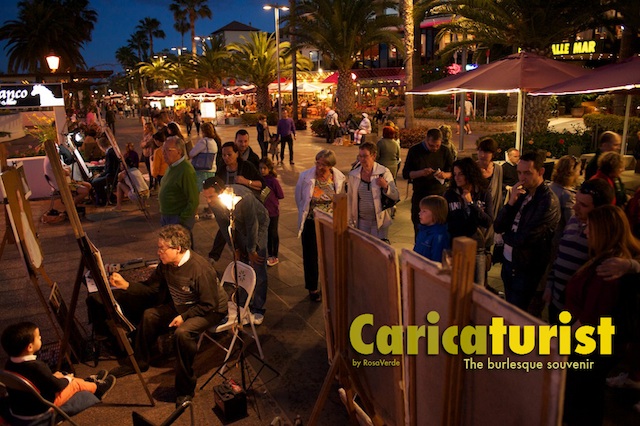

General strike and the difficulty of photographing demonstrations
A priori, any public demonstration -lots of people on the streets showing strong emotions against something and usually not concerned about being photographed- is the perfect place to take some good images. However, every time I set out to do so, I end up with the feeling of not quite having achieved the goal. I guess, with so many things happening at the same time, it’s hard to isolate the bits and pieces which should later compose a general view of the situation.
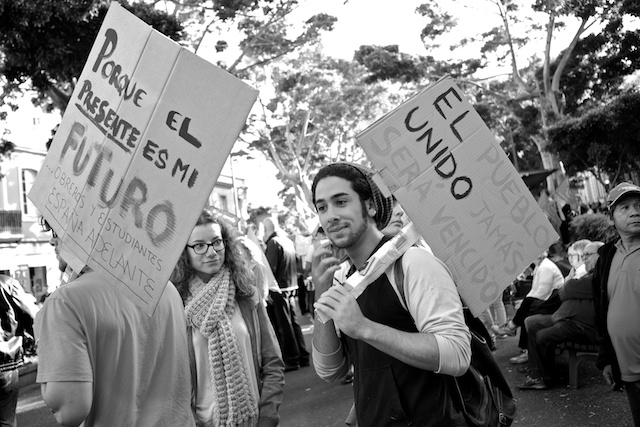
March 29th, Spain's general strike. Demonstration in the streets of Santa Cruz de Tenerife.
Cándido Pérez de Armas, The Artist.
Film director Cándido Pérez de Armas, posing as George Valentin, the main character of one of his favourite recent movies: The Artist by Michel Hazanavicius.

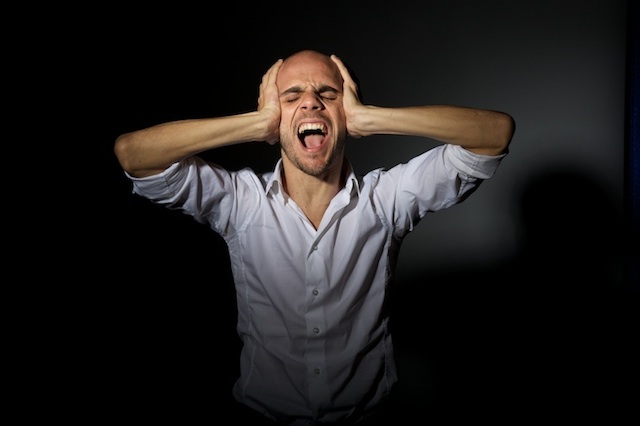
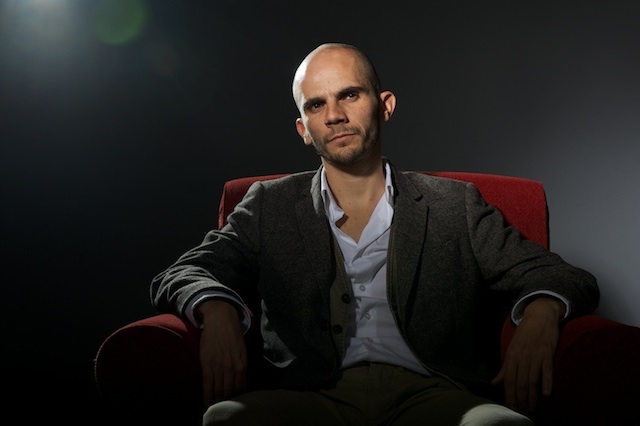
Thanks to Ramón de la Rocha for his invaluable help during this shoot.
Portraits assignment
As the Portraits assignment deadline approaches, it’s time to start drawing some conclusions.
I’ll still give it another try this evening but, so far, I only have 2 out of the 3 sets of pictures we were supposed to have and I am happy only with one of them.
The main problem has been my strategy for contacting people and making clear what I wanted to do. Given the time constraints, I’ve spent far too much time getting to know the people I wanted to photograph and letting them know me. In one of the cases, I went to visit three times, spending a couple of hours each visit. In the end, I didn’t succeed in convincing them to pose for me and yet, I cannot say it has been a waste of time; quite the opposite, in fact, because, not only I had a great time but, I’ve started building a relationship which I hope, with some more time, will result in some very interesting portraits; perhaps even a nice, short, photo essay. And also, while at their workshop, I had the chance to meet a few other quite interesting people; among them, sculptor, poet, writer… Fernando Garcia Ramos.
Mr Garciarramos, as he likes to write his name, is an artist in the broad sense. At 83, he keeps himself very active, not only with sculpture and poetry but also with one of his great passions: learning languages. We had a good conversation in English, and then he talked to me in Russian, Italian, French, Rumanian,… It was a great honour for me to be able to visit his studio.
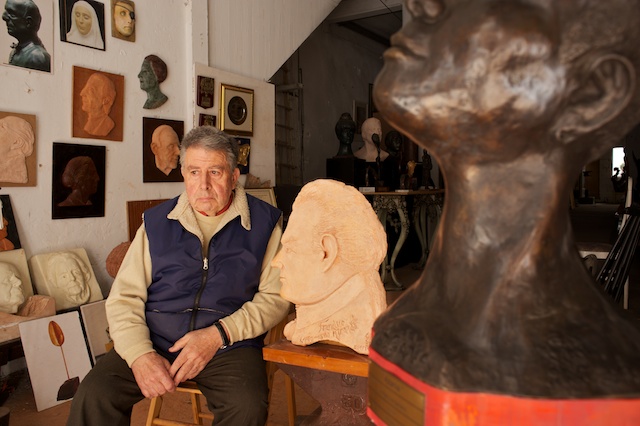
Fernando garciarramos. Sculptor, poet, writer.
Purely photographically speaking, I think I failed at doing a good portrait of him. I didn’t use the available light properly and I didn’t find the right composition despite the very interesting location. I was obsessively repeating myself: “this is such an interesting place, you should be able to do a good photo here”. And that recurring thought, totally blocked me.
I find myself so nervous and uncomfortable directing people that I can’t put my mind to think of the details, possibilities, solutions, etc. around the situation and I end up rushing through the session. I guess all that shows in my face, not making the subject very comfortable either.
After that, I was so desperate for portraits that I went out asking people in the shops around, just in case everything else failed. Although that adventure also took to some interesting places, I do not have a single good image to show.
The one shoot I am quite happy with, is the one I did with film director Cándido Pérez de Armas. The first idea was to take some photos at his workplace but, as he is just editing right now, that would had meant a room with a computer. Having a list of a few of his favourite movies, I decided that I wanted him in the role of George Valentin, The artist. And so, with some studio lighting magic… we created three scenes from the movie. Some photos in the next post!

Stills from movie The Artist.
To conclude, I must say that this has been a very demanding assignment. I keep joking with my friends about this course being more about self discovery and training interpersonal skills than about photography. Well, it’s always been said that photography is much more than pressing the release button. Not that I ever doubted it but it’s now that I am learning what that “much more” really means. Very rewarding and enjoyable in any case!
On ethics and things not going quite as we thought
Steve McCurry is coming to Tenerife! That’s exceptionally good news for us people living in a small island in the middle of nowhere, where this kind of events is not that usual.
Two things in my head right now: McCurry’s visit and the portraits assignment, due by the end of this week, that is driving me nuts. The mix of these two thoughts took me straight to Steve’s page to have a look at his portraits. And while doing so, I couldn’t stop my mind from going back, once again, to the question of to what extend do we, as photographers, have the right to photograph people, and later perhaps, show them in web pages, books, postcards, etc, without their explicit consent.
I am sure we could all agree that McCurry’s photos are so beautiful that one would almost pay to be in one of them but, his work is an exception and, in any case, the people he portraits, most likely, don’t know who he is and have no idea where their images will end up.
For quite some time I thought I had convinced myself that there is nothing wrong on taking people’s pictures in the streets. I put all my attention, interest and even love in each of those images so… what can there be wrong with that? All clear in my head and heart until I bumped into the story behind ’The Let Us Now Praise Famous Men’.
In 1936, writer James Agee and photographer Walker Evans were sent by Fortune magazine to document rural poverty in the U.S. South during the Great Depression. They did so through a detailed portrait of three sharecroppers families. Fortune ended up not running the story but it was later published as a book. It didn’t have much success at the time of publication but, some 30 years later it had become a classic of American literature, a recommended reading across U.S. education system. The families depicted in the book, who never knew exactly what the pictures were for, became what they never wanted to be: an icon of Depression-Era misery and poverty.
In 1989, Dale Maharidge and Michael Williamson replicated Agee and Evan’s work, this time portraying the life of the children in the original photos. The new book, called “And Their Children After Them” revealed the anger many members of the family felt about the intrusion of Agee and Evan in their anonymous lives. The authors received the Pulitzer prize for that book, giving even more prominence to the story.
In 2005, Fortune, once again, sent journalists to visit the descendants of these three families in order to do a story for its 75th anniversary issue. And once again, the families show their resentment towards those who entered their lives to show them to the world not only as poor but also as ignorant people.
As one of the descendants, Phil Burrough, said:
“They were cast in a light that they couldn’t do any better, that they were doomed, ignorant. How would you feel if somebody cast your folks, your parents, or your grandparents in that light?”
I cannot really tell any of the people in my photos where they will in years time because such destiny is not always in my hands; so… how can I promise them that it will all be ok if I cannot be sure myself? Ciara Lemming’s work is a good nowadays example of how things can go very unexpectedly wrong even having the subject’s consent.
No photo and yet a great photo adventure
Yesterday, as I got home, I wrote:
Close to tears, that’s how I am feeling. Photography has given the most wonderful day I could think of.
One day later, I keep looking at Arnold Newman’s photos trying to figure out how on earth did he managed to show a person’s life and personality through a single portrait. Because that’s what I want to do, I would love to be able to have in a frame the enthusiasm, passion, inventiveness of the Sons of Wenceslao; four brothers, a life time working together.
In the few hours I spent with them, a good photo was not the prize I got, but a much richer one; a life lesson that didn’t come in words but through their shining eyes while sharing with me more than 60 years of creativity and work: enjoy what you do and do it with generosity. That’s it.
No photo to illustrate any of that generosity here; shot very few and with very little success. I’ll have to go back and try again but, even so, I feel grateful to my photography because I know that without it I would had never dare to step on these people’s life.
More on their craft, along with some photos, soon, I hope.
Carnival
No doubt Carnival is a very social event. The more interactive the outfit the more people you have the chance to joke with. An NBA player with the basket on top on his head sounds kind of interactive. Important to keep the ball tied to the ring somehow. Otherwise you risk not only loosing it but having to pick it up from the suspicious waters running along the crowded streets.

Three friends get their carnival outfit ready to go out to the street party.
Struggling with relationships
I could go around finding all sort of arguments for justifying my problems with this 3rd assignment but if I am to be honest with me, I must, very loudly, admit that the one reason for struggling with it, is simply not having a clear idea of what I want to say.
I went to a bar to take photos of people dancing and drinking late at night. It may or may not show in the photos but, those who have known me through my teens and early twenties, see right away that the story talks much more about my fears than about anything else in the frame.
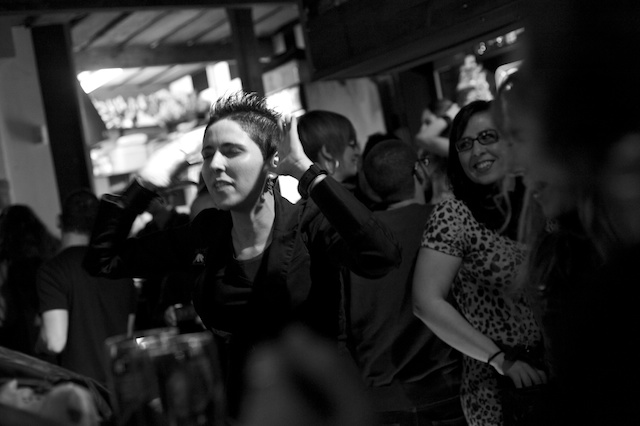
People enjoying themselves at the Hombre Bala Rock & Coffe Bar during the Depeche Mode theme night.
Now that I’ve just written it down, I realise that perhaps that’s a good enough reason to get the story done. Isn’t it that very often the very best documentaries are those about a very personal experience taken to a general context?
“Pleasures and Terrors of Kissing” by James Friedman is one of such great stories.
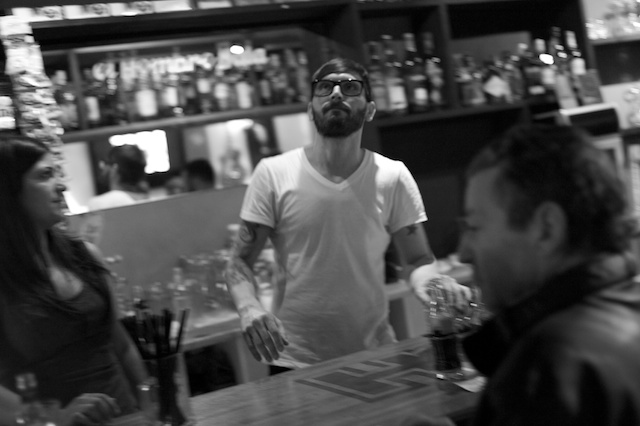
Bar attendant at the Hombre Bala Rock & Coffe Bar during the Depeche Mode theme night.
Doubting
Photography and doubt by Joerg Colberg
“On the level of photographs, trust means to trust one’s instincts, to realize that the images convey what they are intended to convey and that some gaps serve the work. Doubt means to question all of that, to question whether a photograph is indeed a good photograph, whether an edit doesn’t have any holes, etc.”

Believing
One of the reasons I joined this MAPJD course is because I needed directions on learning how to construct a story. I know that the bits and pieces of the first few assignments are supposed to lead me towards exactly that: telling a story. And I do hope they get me there but, for now, my feeling is that I am not walking quite in the right direction. It’s like I keep doing random photos here and there without a clear idea of what’s behind them. What do I want to say? Perhaps I should stop taking photos for a minute and sit down to think.
In the application interview, John Easterby said to me: “You have to believe you have something to say”. Well, I am working hard on believing, but I guess I should work harder.

A man feed his child as he watches the athletes pass by running.